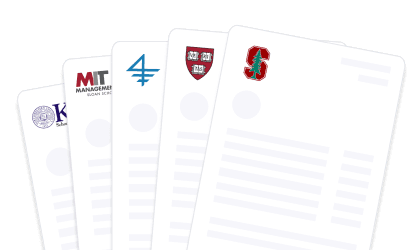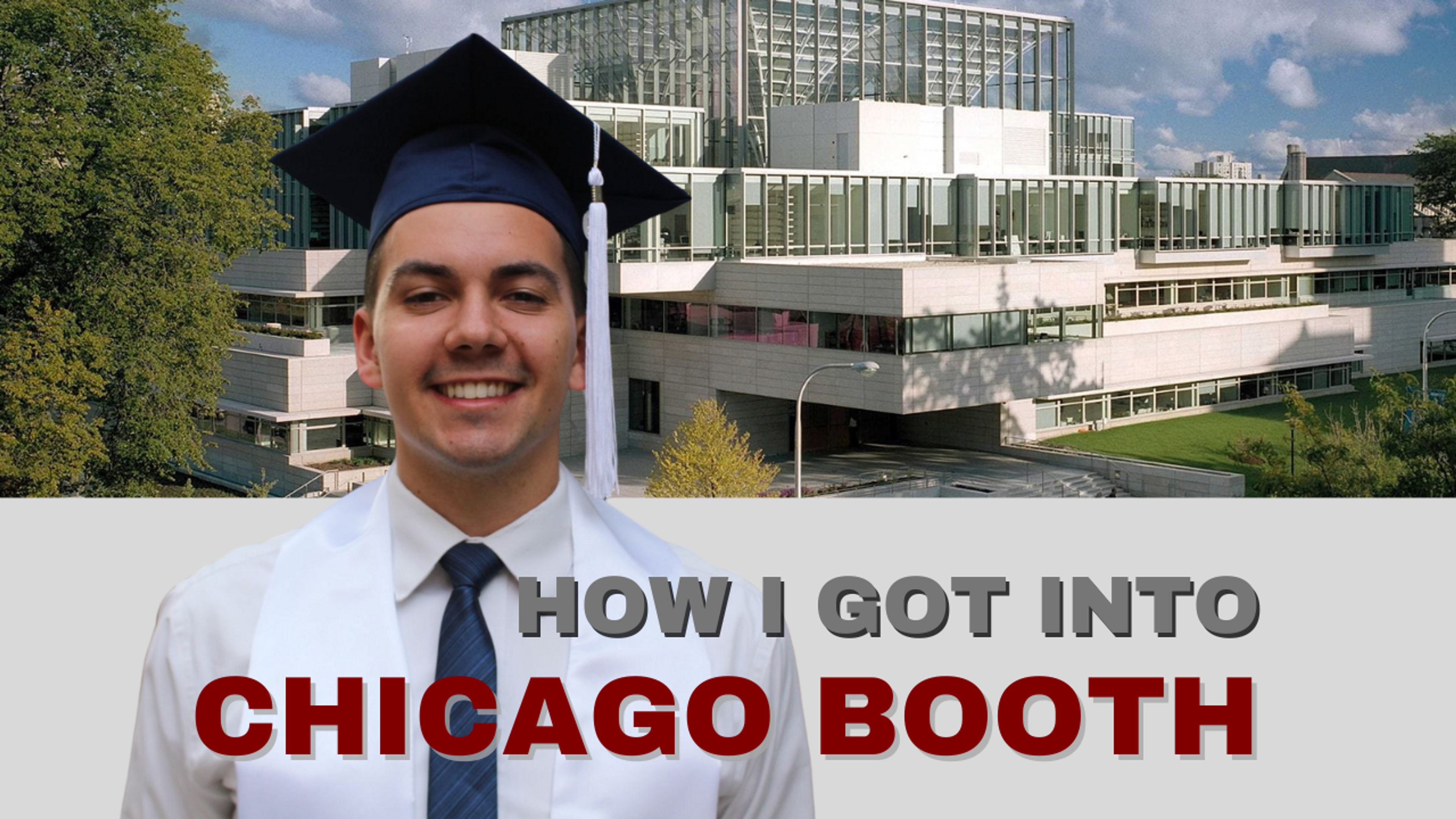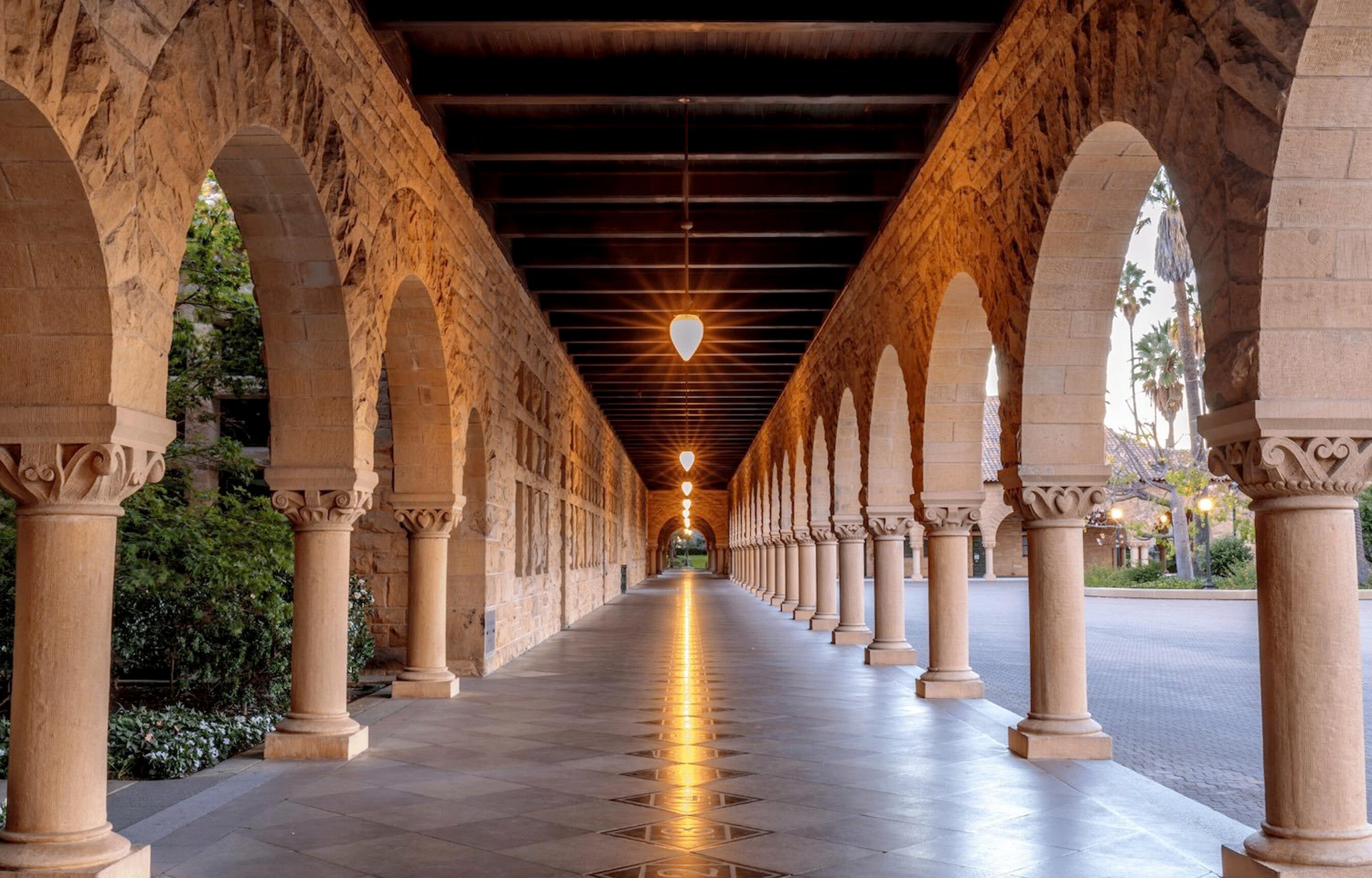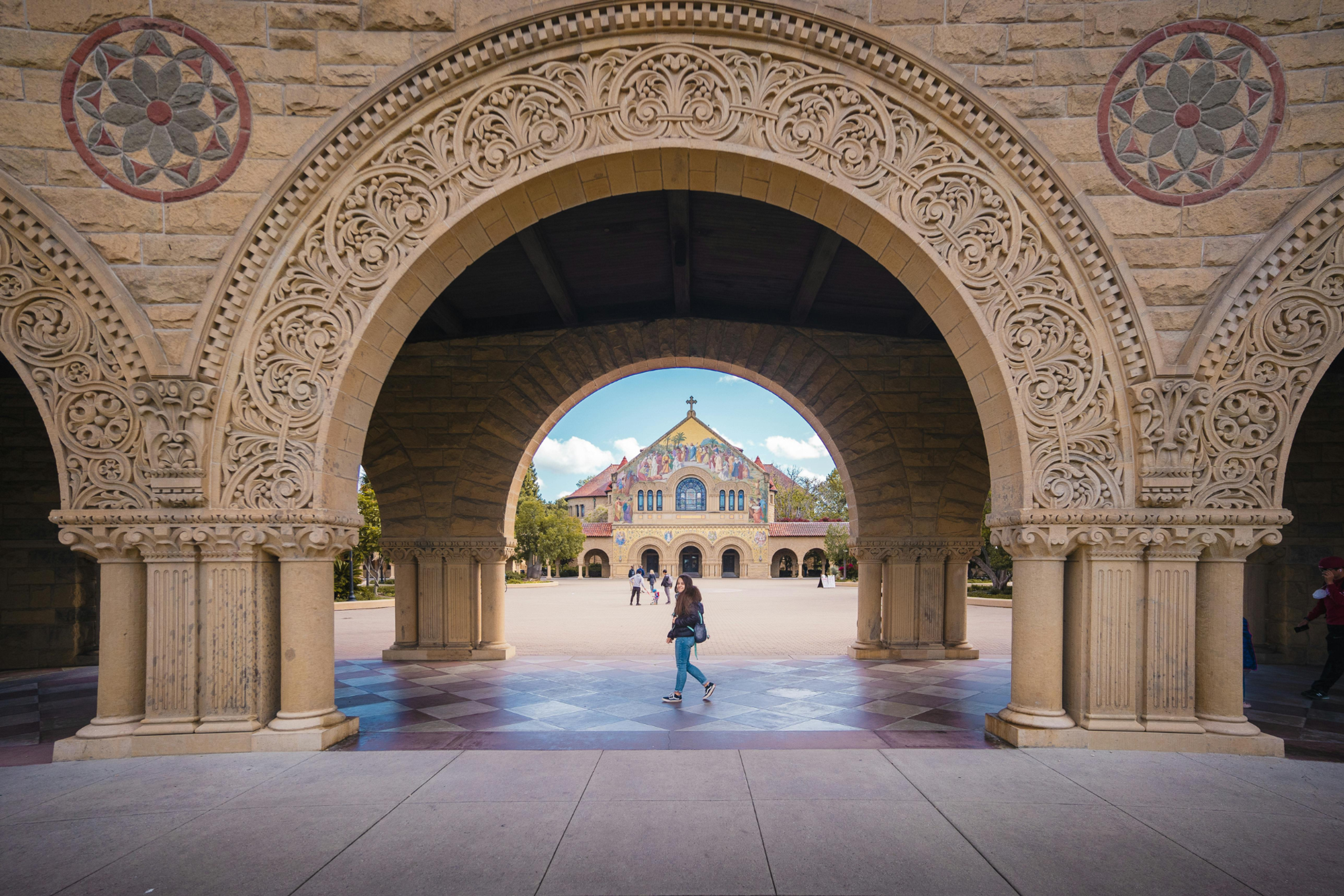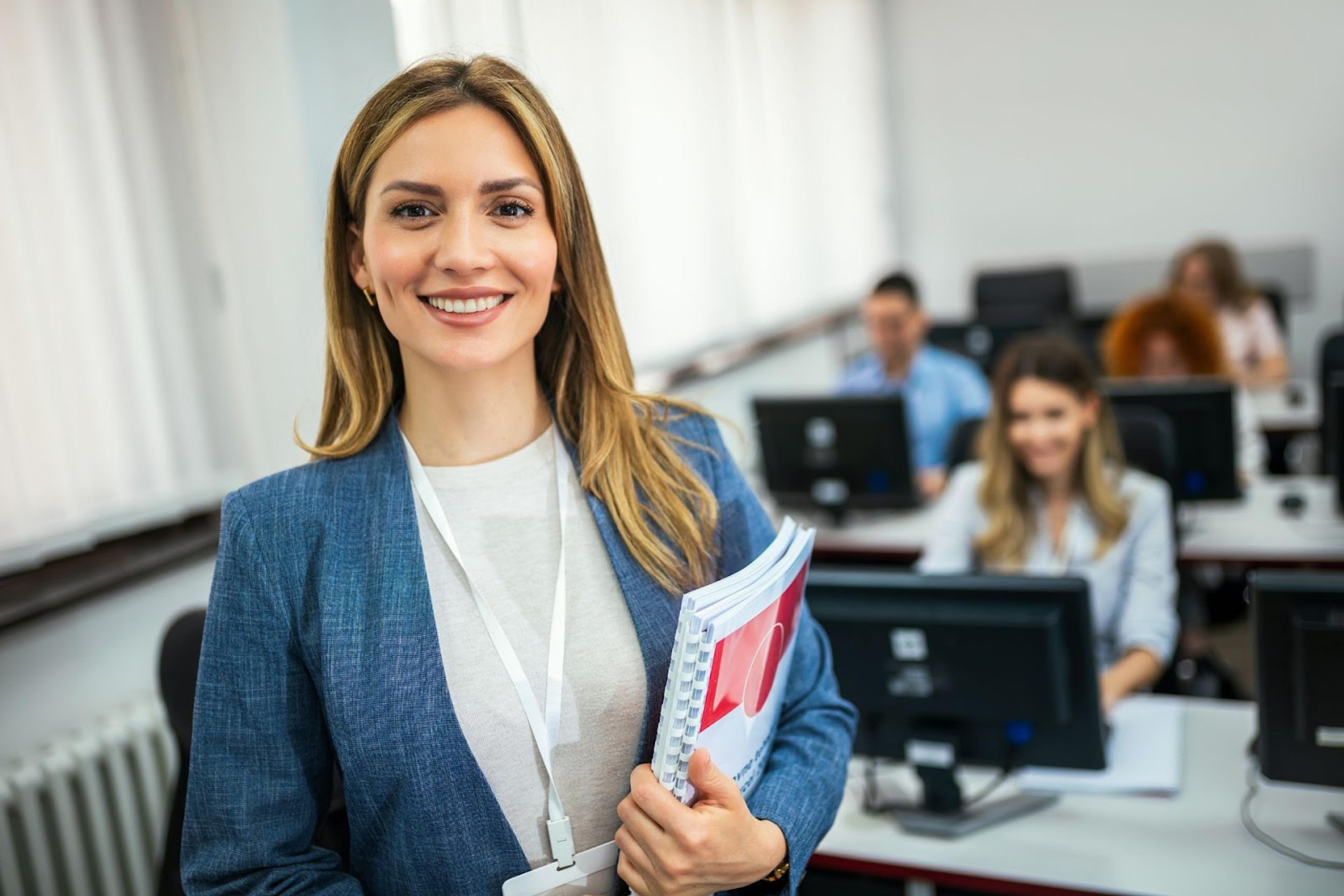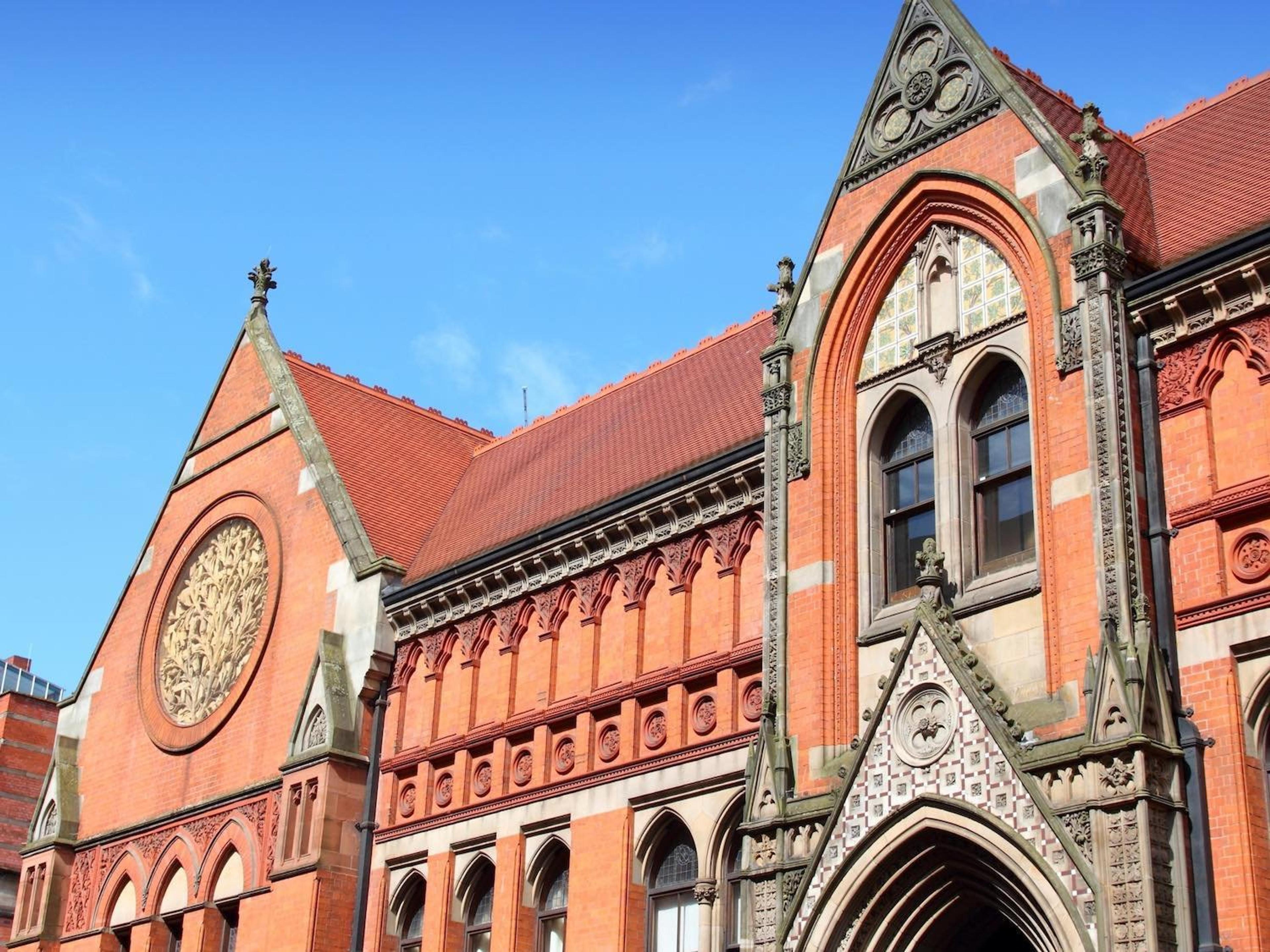
Table of Contents
Free Event

Featuring Melanie E.
How to Get a Head Start on Your MBA Application
Starting Wednesday, April 16
10:00 PM UTC · 60 minutes

Featuring Melanie E.
In recent years, deferred MBA programs have become increasingly popular among ambitious college students looking to secure a spot in a top business school before graduation. These programs give students 2-5 years to safely take risks and pursue different ventures before matriculating.
For our list of the best DMBA programs, see: Top 10 Deferred MBA Programs in the US—and How to Get In (2025)
The Stanford Graduate School of Business (GSB) offers one such deferred enrollment program for prospective MBA candidates. The deferred program at Stanford GSB is one of the most competitive and sought-after. Here’s what you need to know.

What is the Stanford Deferred MBA Enrollment Program?
If you are a junior or senior in your undergraduate degree and are thinking about pursuing an MBA, you may be the perfect fit for a deferred enrollment program. The Stanford Deferred MBA Enrollment Program allows undergraduate and master’s students without full-time work experience to apply to the MBA program and defer enrollment for three to five years, using the time to gain practical experience, pursue entrepreneurial ventures, or advance their career goals. Deferred MBA programs are an excellent option for prospective MBA candidates who want the security of a guaranteed spot in a graduate school of business without immediately enrolling. This program, established in 2010, seeks to cultivate future leaders who will make an impact on the world.
Eligibility
The Stanford deferred enrollment program is open to those in their final year of college or those in a graduate program that was started immediately after undergraduate studies. Eligibility requirements specify that college seniors who will complete their degree by September 30, 2024, are eligible to apply. Deferred MBA programs offer a valuable opportunity to gain relevant experience, particularly in industries that often require pre-MBA knowledge, like private equity, biotechnology, and investment management.
Why Apply to the Deferred Enrollment Program?
Deferred programs benefit college seniors and recent graduates who aspire to earn an MBA degree but prefer to gain work experience first. Most business schools recognize the value of allowing students to defer, helping them build relevant skills and industry expertise. Many international students and those from diverse educational backgrounds also apply for deferred enrollment at selective programs like Stanford GSB and Harvard Business School to earn an MBA degree.
On its website, Stanford GSB outlines three compelling reasons why students should consider its DMBA program:
- Pursue opportunities that enable you to build expertise, enhance your skills and knowledge, expand your perspective, and develop professional judgment and self-confidence.
- Explore an industry (or two) before earning your MBA if you are unsure about your long-term professional path, especially if you are a college senior.
- Prepare for certain industries — private equity, biotechnology, and management consulting, in particular — which tend to recruit MBA candidates who have pre-MBA work experience or specialized knowledge in that field.
Who is Stanford GSB Looking For?
Stanford GSB is looking for college seniors and/or graduate students who have shown potential to make a significant impact on the world. The admissions committee considers prospective applicants with backgrounds in various fields, including STEM, humanities, and business, ensuring a multidimensional student body.
The GSB Admissions Director, Kirsten Moss, described the approach as viewing accepted applicants much like venture capital investments. Most business schools, including selective institutions like Stanford and Harvard, prioritize diversity and leadership potential, so it’s beneficial to demonstrate these qualities in your application.
Read our full Stanford MBA guide for an in-depth dive into the business school: Stanford GSB—MBA Program and Application Overview.

Stanford Deferred MBA Program – Acceptance Rate
Stanford does not release specific class profiles for its deferred enrollment program, but statistics align closely with the broader MBA program. The admissions team assesses applicants based on both quantitative measures, such as average undergraduate GPA and GMAT scores, and qualitative aspects, such as unique experiences and contributions.
For the class of 2026:
- Acceptance Rate: 6-7%
- # of Applicants: 7,295
- # of New Students: 424
- Women: 44%
- Students of Color: 53%
- International: 39%
- Average GPA: 3.75
- First-Generation: 12%
- Average GMAT: 738
- Average GRE: 163 V; 164 Q
Impact of Deferred MBA Programs on Careers
Deferred MBA programs provide flexibility to prospective applicants by allowing them time to refine their career goals before starting their MBA studies. Many business schools, including top business schools like Harvard Business School and Stanford, support deferred MBA candidates in pursuing professional experiences that will contribute to their academic and career aspirations.
After acceptance, deferred admits are enrolled in communities and provided with other resources that support them as they enter the workforce. Once matriculating, they reap the same benefits as anyone else in the MBA program with extensive networking, recruiting, and curriculum benefits.
Application Details
At GSB, there is no separate application for deferred enrollment; instead, you will select the year in which you prefer to enroll. Even if you request direct enrollment, the admissions committee may grant you deferred enrollment or they might offer a deferral for a different amount of time than you request. If you are eligible for deferred enrollment, the application fee is reduced to $100.
There are three application rounds for GSB and those interested in deferred enrollment are recommended to apply in Round 3. The next R3 deadline for Stanford is April 9, 2024, and students will be notified of acceptance in late May 2024. Read more about the recently released deadlines here: Stanford GSB MBA Application Deadlines (2024-2025).
Stanford GSB Deferred Enrollment Essays
The MBA essays for deferred applicants are the same as those required for traditional applicants. For those applying to deferred programs in 2025, the prompts are:
Essay A: What matters most to you, and why?
- For this essay, we would like you to reflect deeply and write from the heart. Once you’ve identified what matters most to you, help us understand why. You might consider, for example, what makes this so important to you? What people, insights, or experiences have shaped your perspectives?
Essay B: Why Stanford?
- Describe your aspirations and how your Stanford GSB experience will help you realize them. If you are applying to both the MBA and MSx programs, use Essay B to address your interest in both programs.
Read: Craft a Powerful Essay for Stanford GSB: What Matters Most & Why?

Ultimate MBA Essay Guide
See the MBA essay prompts, top tips from experts, and real examples from admits with this comprehensive guide.
Stanford GSB Deferred Enrollment Interview
Like traditional applicants, interviews are required for a deferred acceptance. Stanford GSB interviews about 40-45% of traditional applicants and while they don't release the specific stats for deferred applicants, know that if you get an interview, it's a great sign that they are seriously considering your application.
The interview questions will likely look different as, unlike traditional applicants, deferred applicants don't have years of full-time work experience to talk through. Instead, expect questions to focus more on what you did throughout your time in college and what your plans are for the future.
Read: How to Nail Your Stanford GSB MBA Interview: Overview, Questions, & Tips
Get Into Your Dream Deferred Program With the Help of an Expert
The best way to nail your deferred MBA applications is to work one-on-one with an admissions coach. They'll be able to provide in-depth, customized guidance based on your personal background, budget, and goals. Here are some of our most popular admissions coaches, browse all of them here.
Where Can I Start?
GSB, like all the M7 business schools, is difficult to get into, but not impossible. Don’t discount your experience, aspirations, and unique individuality. Here at Leland, we’ve got lots of resources to get you started and make your profile as competitive as possible.
Read these articles to start your deferred MBA journey:
- Are MBA Admissions Consultants Worth It? How to Decide (and How to Pick One)
- How to Write a Powerful MBA Essay–With Examples
- A Guide to the UC Berkeley Haas Accelerated Applicants Deferred MBA Program
- MIT Sloan Early Admission Deferred MBA Program: What You Need to Know
FAQs
Is it hard to get deferred from Stanford?
- Stanford's philosophy is to make final decisions whenever possible. As a result, Stanford defers only a small percentage of Restrictive Early Action applications to Regular Decision.
Does Stanford allow deferred enrollment?
- Admitted students are welcome to request an enrollment deferral, also known as a gap year. In order to do so, please complete the Admission Response form in your Stanford Portal.
What are the odds of getting into Stanford GSB?
- The acceptance rate at Stanford GSB is 6.9%, which indicates that around seven out of 100 applicants are admitted to the school.
How many Stanford deferrals get accepted?
- Historically, a deferred Stanford applicant has a 15–25% chance of selection, assuming one's grades remain steady or improve, an excellent additional recommendation is submitted and the option update form completed effectively.
What is the lowest GPA someone got into Stanford with?
- There is no minimum GPA or test score, nor is there any specific number of AP or honors courses you must have on your transcript in order to have your application reviewed or be admitted to Stanford.
Does Harvard accept deferred students?
- Historically, about 10% of students who Harvard defers ultimately earn admission in Regular Decision. While this data point can vary from year to year, it's rarely released by the school.
How big is the Stanford deferred MBA class?
- Another popular program is the Stanford GSB Deferred Enrollment program. It is one of the most selective business schools, with a small class size of about 400 students. It is for undergraduate students with diverse educational and professional backgrounds who want to start their MBA right after their senior year.
How many people get interviews for Stanford GSB?
- The Stanford Graduate School of Business (GSB) typically receives more than 8,000 applications a year. Of those, it interviews approximately 1,000 candidates to fill a class of around 420. It doesn't take intense GMAT prep to recognize that the odds of getting in are pretty slim!
What does Stanford GSB look for?
- The mission of the GSB is to develop principled, insightful, and innovative leaders. As we build each class, we look for students who will be engaged in our classrooms and create positive impacts on campus and beyond. In our application, we seek to learn about how you think, how you lead, and how you see the world.
Is a deferral from Stanford good?
- Yes, because Stanford denies most Early Action candidates, you've still got a real chance of earning Regular Decision admission to The Farm.
What kind of students does Stanford look for?
- Academic excellence serves as a cornerstone of Stanford University's admissions criteria. As one of the world's leading educational institutions, Stanford seeks students who have demonstrated exceptional intellectual abilities and a genuine passion for learning.
Why is Stanford GSB so hard to get into?
- Stanford GSB boasts an impressive average GMAT score of 738 for admitted students, a testament to the school's rigorous academic standards and commitment to excellence. Stanford GSB requires applicants to submit either the GMAT or GRE, so if you plan on taking the GMAT, aim for a score higher than 738.
Can you get into Stanford GSB without an interview?
- If invited to interview, you will be matched with a member of our interview team which includes a small subset of our alumni community and MBA Admissions team. Your interview may be conducted virtually or in person. Interviews are by invitation only and are required for admission.
How many Stanford deferrals get accepted?
- Historically, a deferred Stanford applicant has a 15–25% chance of selection, assuming one's grades remain steady or improve, an excellent additional recommendation is submitted and the option update form completed effectively.
How do you increase your chances of getting into Stanford?
- A combination of rigorous courses and high grades will help increase your chances of getting into Stanford. Take honors classes when you can, and attempt to receive all A's (or equivalent). Doing so won't guarantee your acceptance, but it is necessary to be considered for admission.




